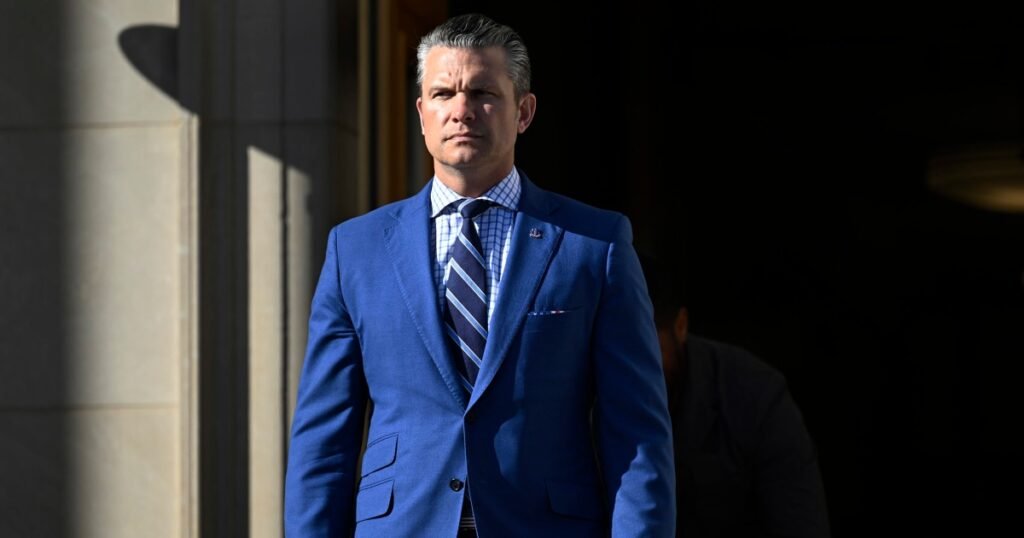U.S. Defense Secretary Promises Increased Support for Ukraine Amid Escalation Fears
Introduction: Strategic Developments in the Ukraine Conflict
As the conflict in Ukraine continues to evolve, U.S. Defense Secretary Pete Hegseth announced significant military support could soon be on its way to bolster Ukraine’s defenses. The focus is shifting toward enhancing Ukraine’s capabilities, potentially including the controversial deployment of long-range Tomahawk missiles. This move aims to apply pressure on Russia to seek an end to the ongoing war.
NATO’s Enhanced Commitment to Ukraine
In meetings leading up to a NATO defense ministers’ conference in Brussels, Hegseth underscored the alliance’s reinforced dedication to Ukraine. He indicated that NATO member nations are collectively stepping up their commitments, and these pledges are set to convert into actionable military capabilities. A key aspect of this initiative involves NATO countries purchasing U.S. weapons to provide to Kyiv.
The Role of Tomahawk Missiles
One of the pivotal points of discussion revolves around the possible supply of Tomahawk missiles to Ukraine. These American-made missiles can strike long distances deep into enemy territory, making them a potent asset in the ongoing conflict. Earlier discussions hinted that these missiles might signify a "qualitatively new stage of escalation," according to statements from the Kremlin.
While Hegseth’s announcement about "firepower" does not explicitly confirm the inclusion of Tomahawk missiles, the possibility is a point of considerable interest. The Kremlin has voiced concerns, warning that such Western armaments could heighten the risk of a broader conflict.
Analyzing Trump’s Position on Military Aid
Former President Donald Trump has been contemplating the deployment of Tomahawk missiles to Ukraine, showcasing a nuanced stance on the U.S. response to Russia’s actions. While discussions have been framed within the context of maintaining peace through strength, Trump’s strategy evolves as the situation in Ukraine develops.
Highlighting his broader foreign policy approach, Trump previously asserted that peace is achieved through respected military capabilities, rather than mere rhetoric. His forthcoming meeting with Ukrainian President Volodymyr Zelenskyy at the White House will likely focus on military assistance, including the controversial Tomahawk missiles.
Concerns of Escalation
The Kremlin’s response to discussions about U.S. military support has reiterated its stance that any enhancement of Ukraine’s capabilities could lead to further escalation. The alliance’s eastward expansion—growing since the post-World War II era—has been portrayed by Russia as a contributing factor to what it terms a "special military operation" in Ukraine.
The Ongoing War: Progress and Challenges
The conflict has persisted for more than three and a half years, during which Ukraine has made notable progress, reclaiming territory through successful counteroffensive campaigns. Nevertheless, Russia still occupies approximately one-fifth of Ukraine’s territory.
Trump’s Evolving Stance on Ukraine
Initially, Trump had expressed views that suggested Ukraine might need to concede land to end the conflict. However, he has since revised his perspective, asserting that Ukraine can regain all its occupied territories—a notion supported by the struggles and successes of Ukrainian forces against Russian advancements.
Conclusion: The Path Forward
With geopolitical tensions at an all-time high, the outcome of upcoming discussions between U.S. officials and Ukrainian leadership will be critical in shaping military strategies and alliances moving forward. As Trump stated, resolving the issues in Ukraine should take precedence over other geopolitical conflicts. The evolving military landscape and potential U.S. support signal a significant moment in the Ukraine conflict, one that could influence peace negotiations and broader international relations.
For more detailed insights into the unfolding situation, visit sources like NBC News for ongoing coverage and analysis.


